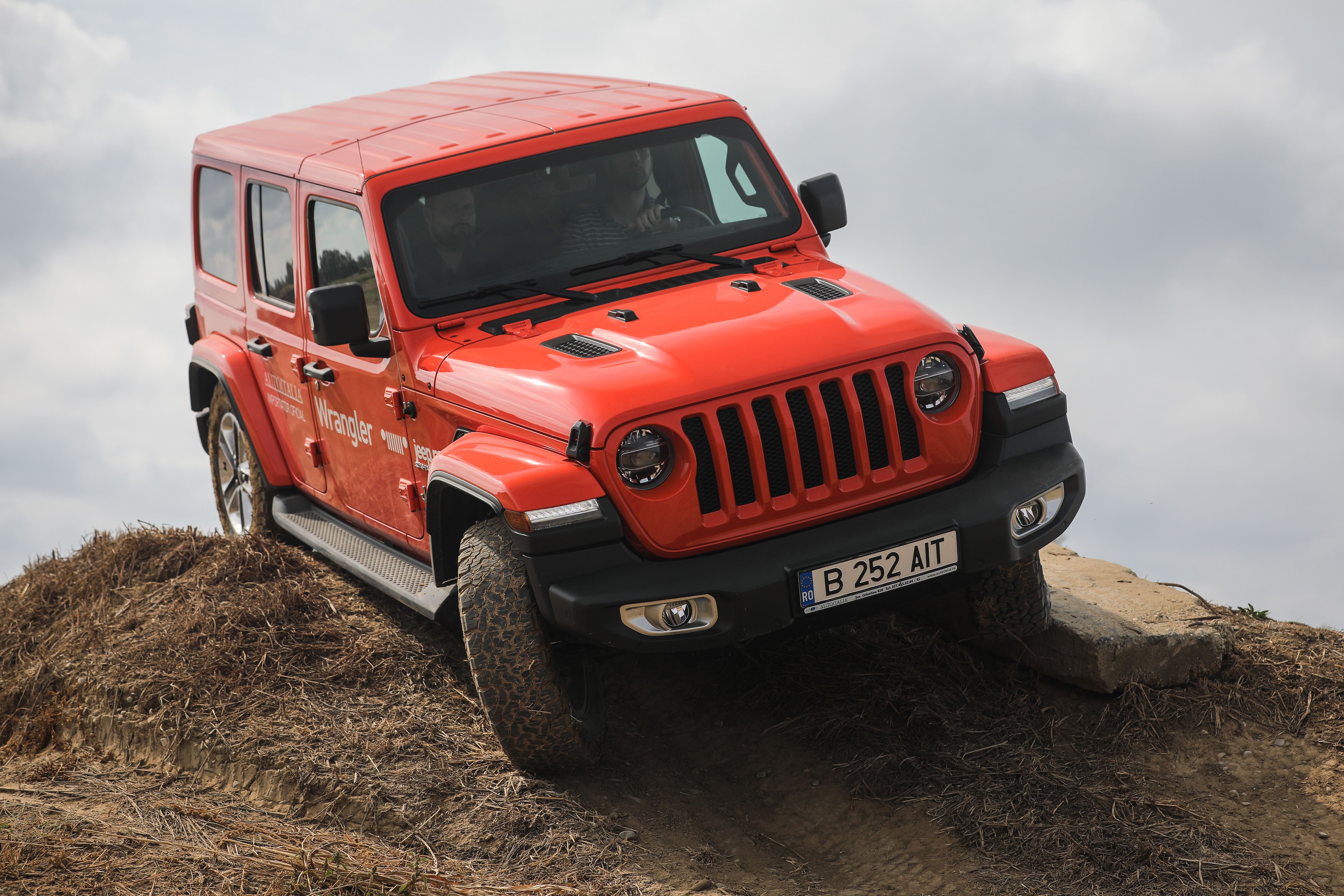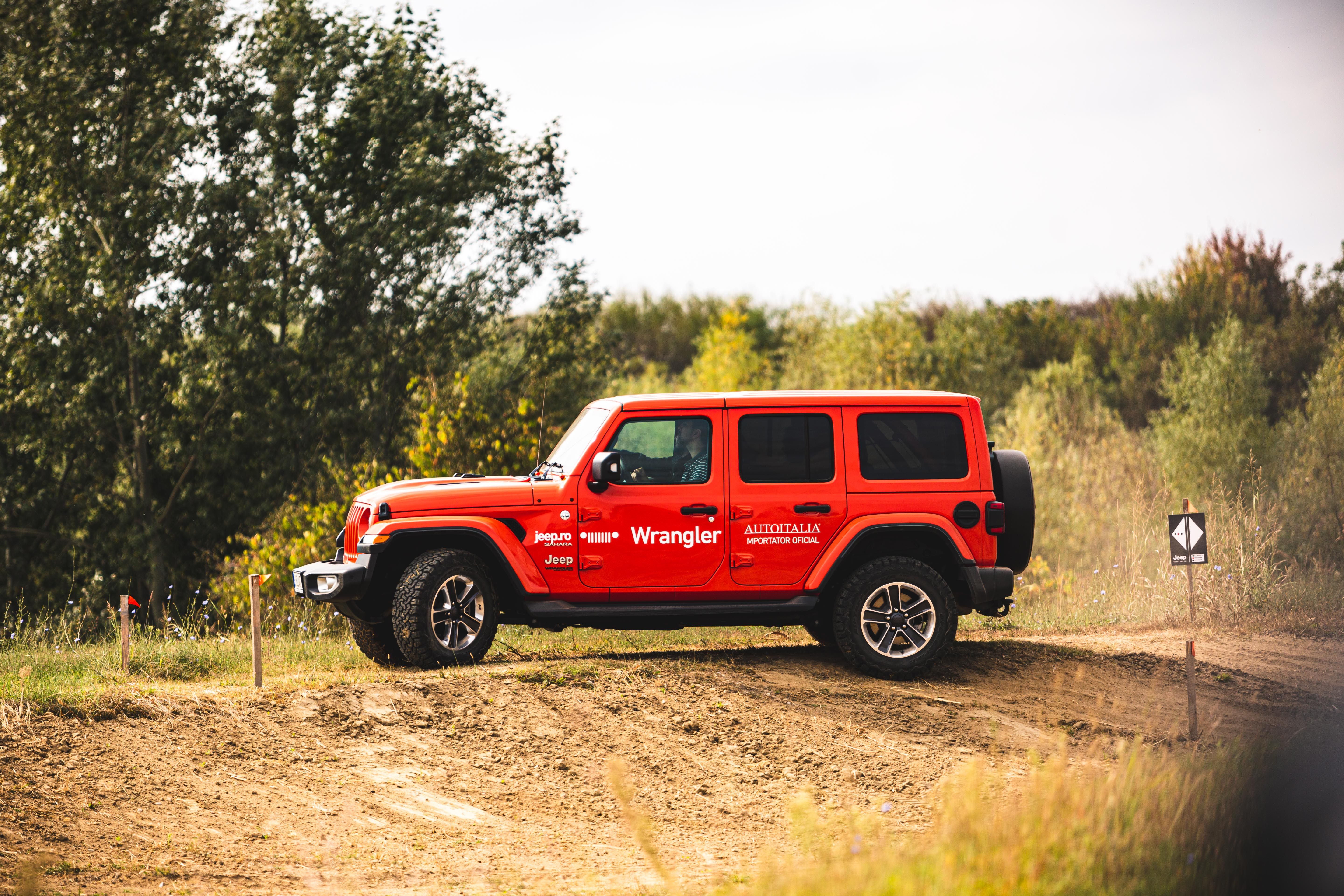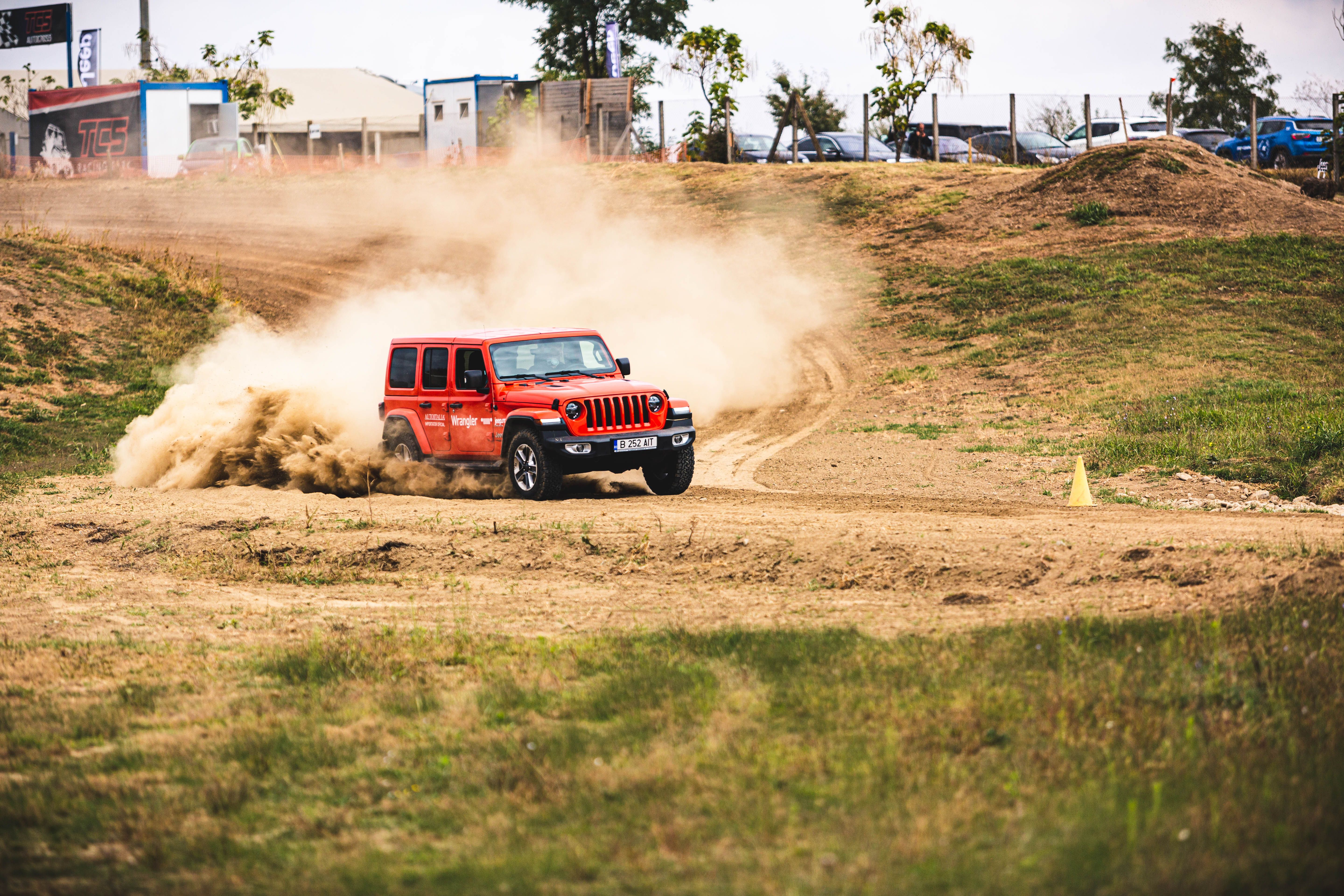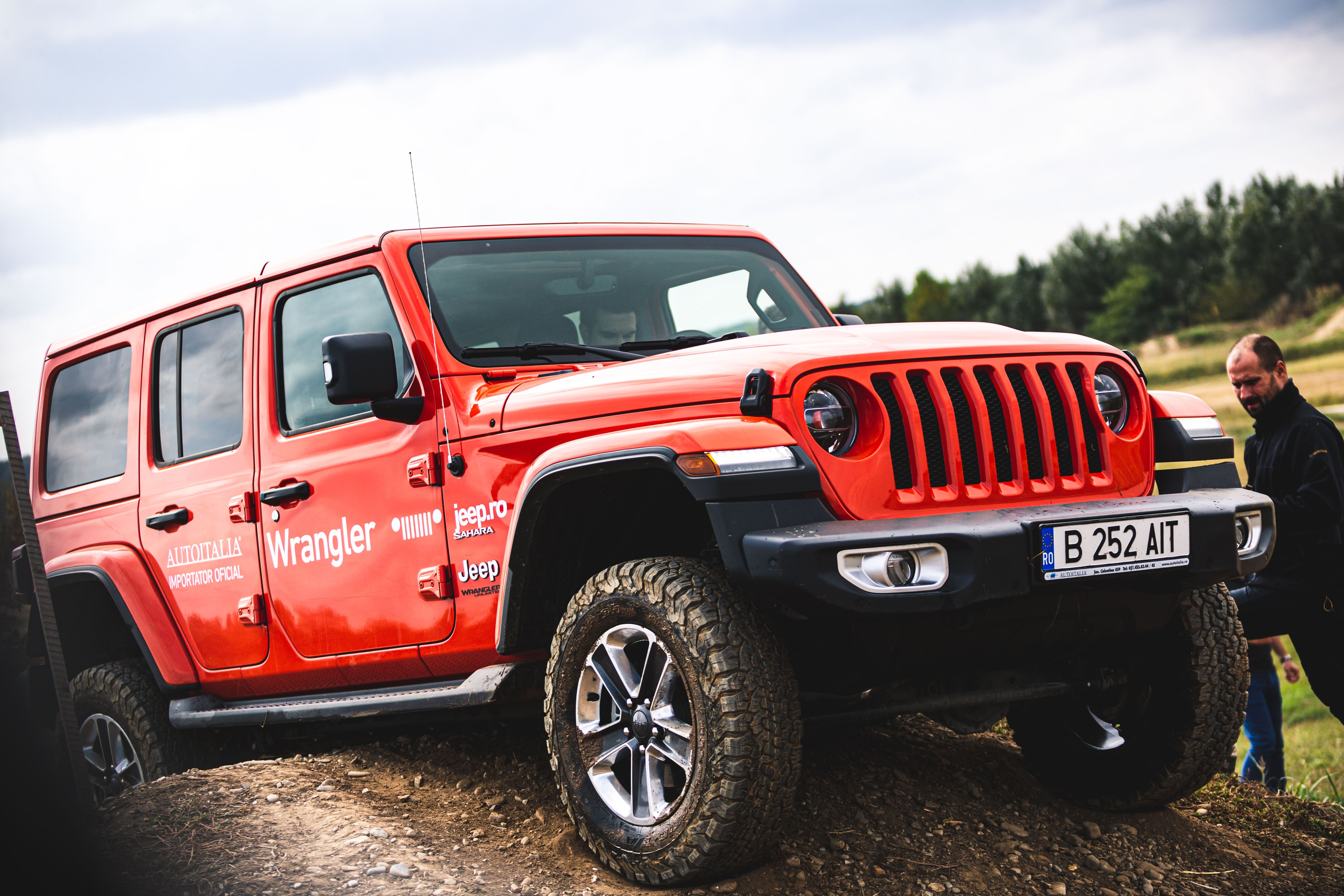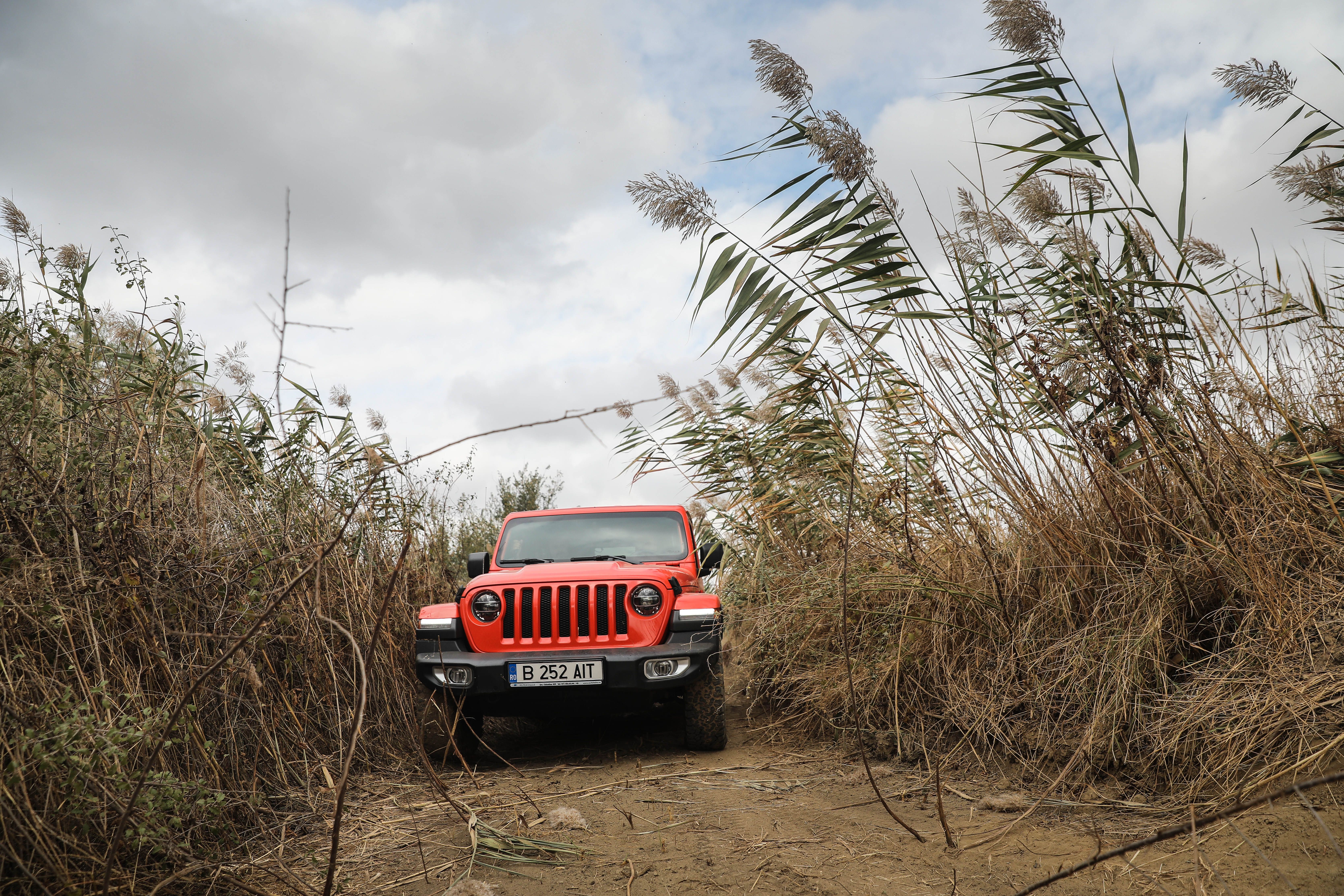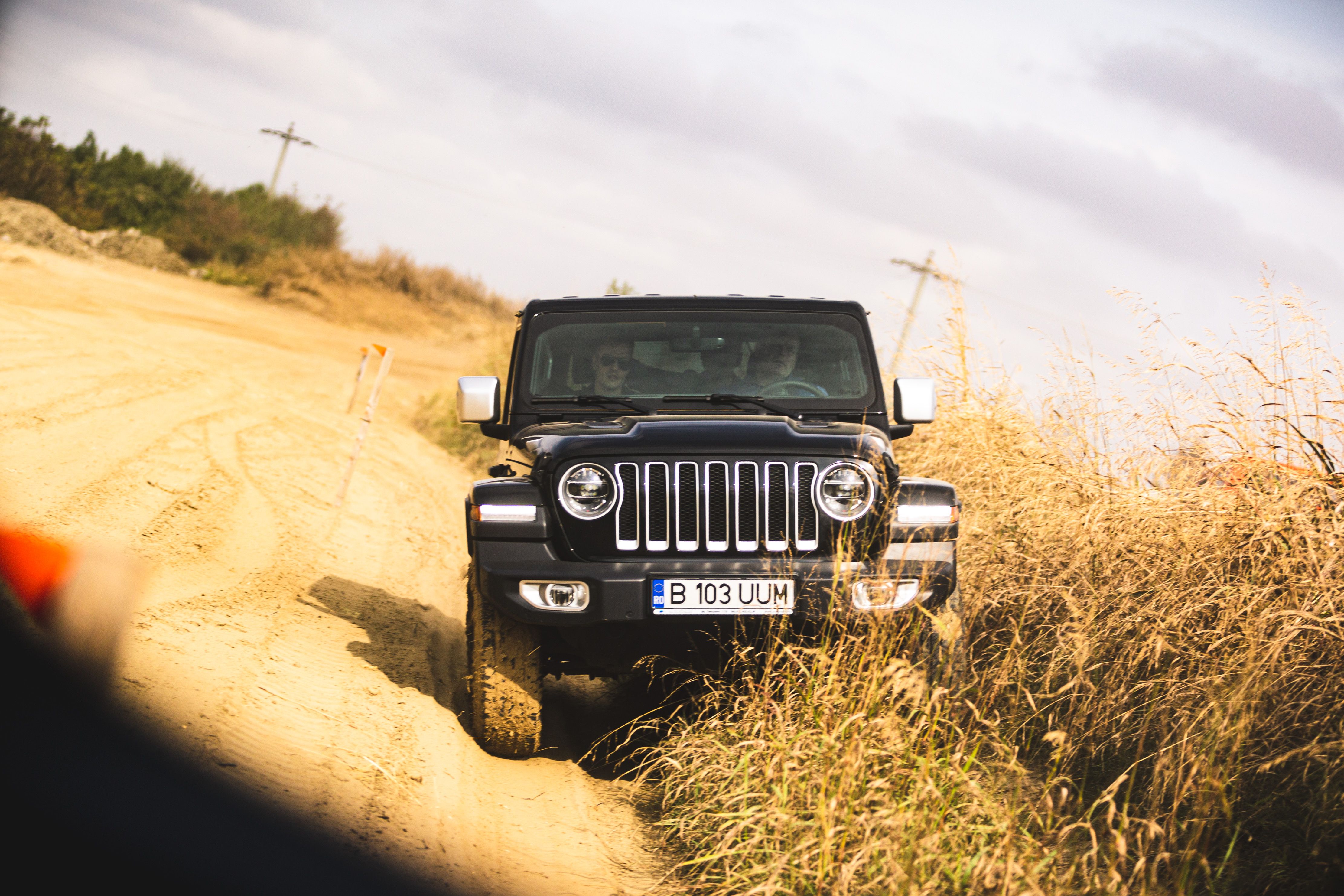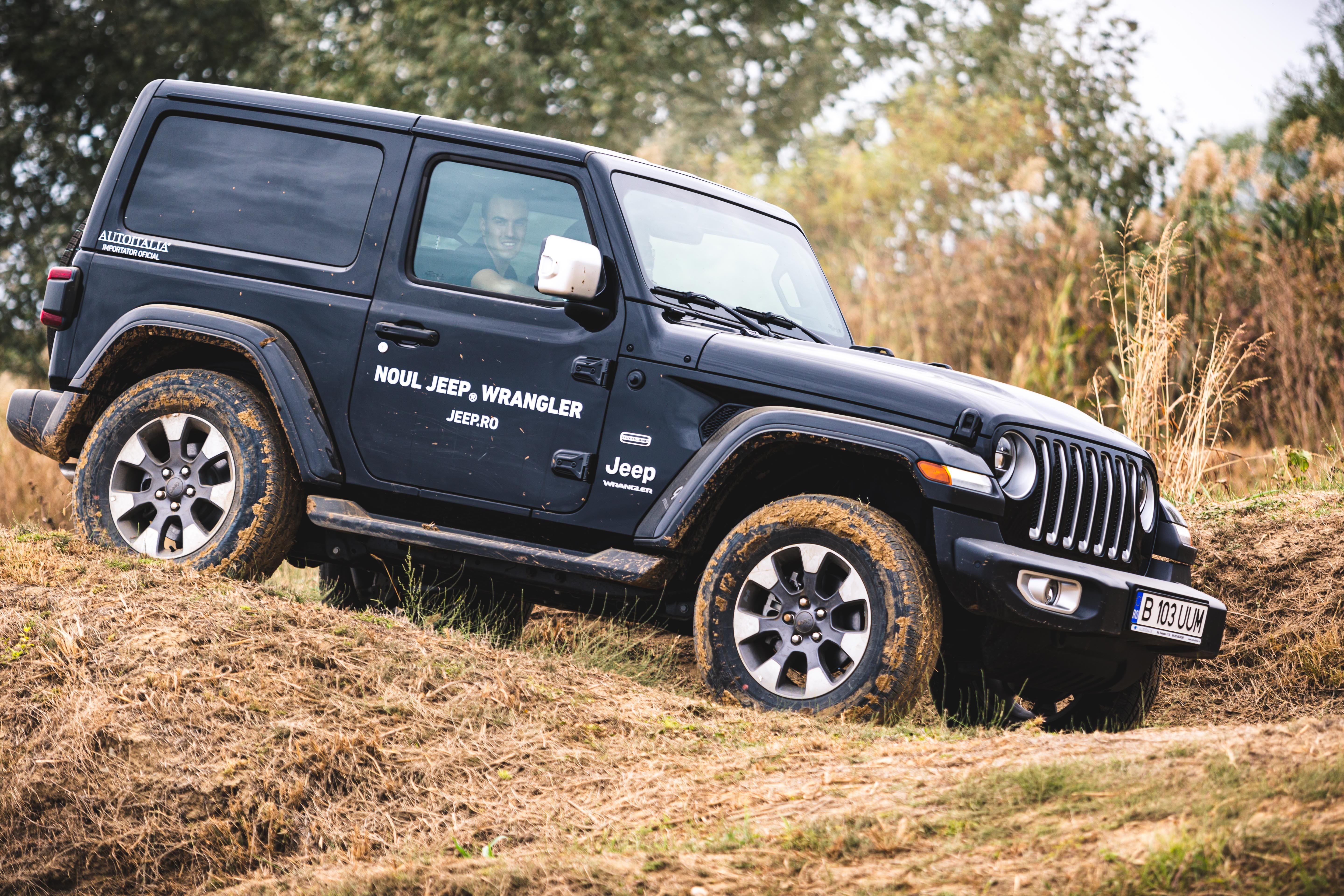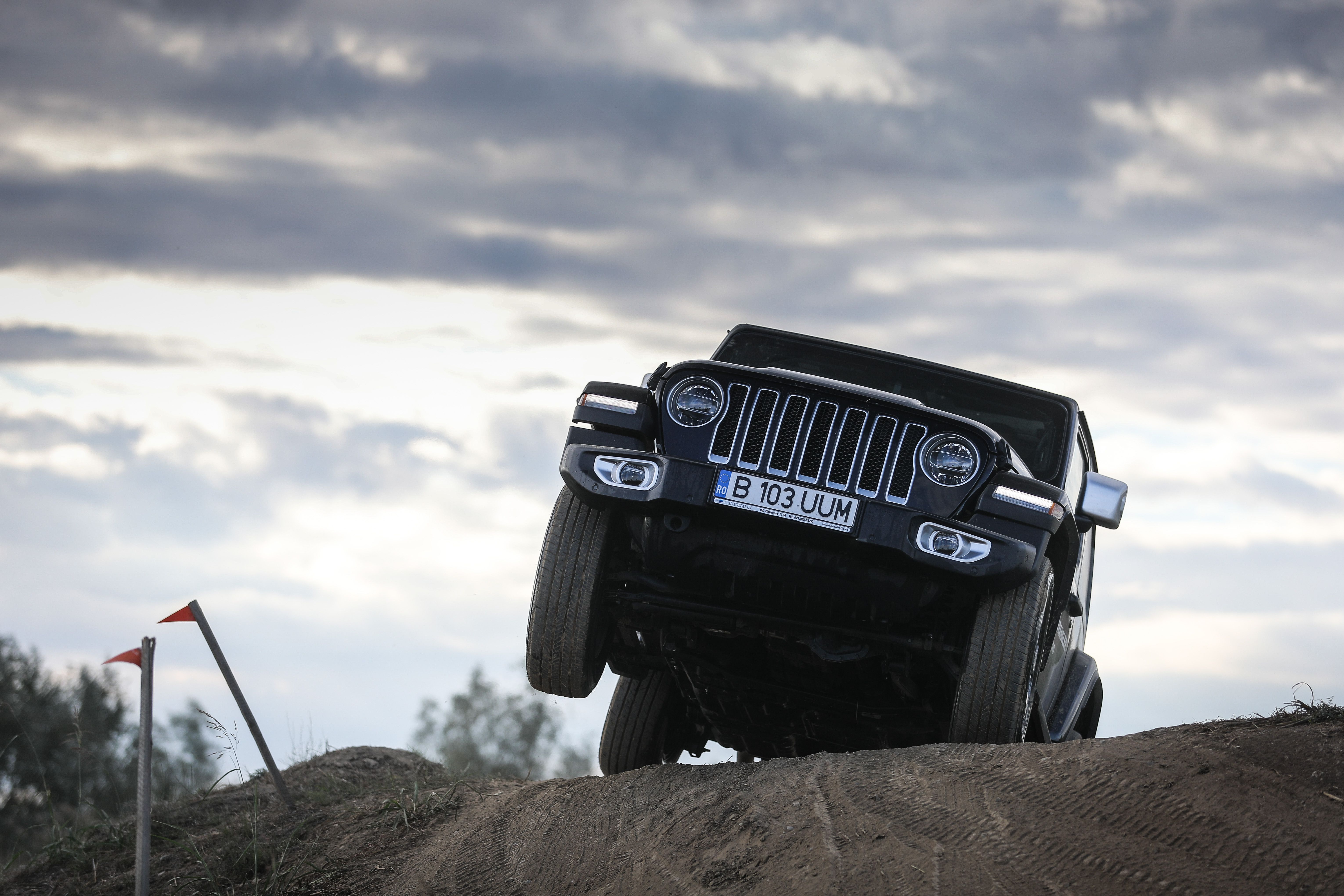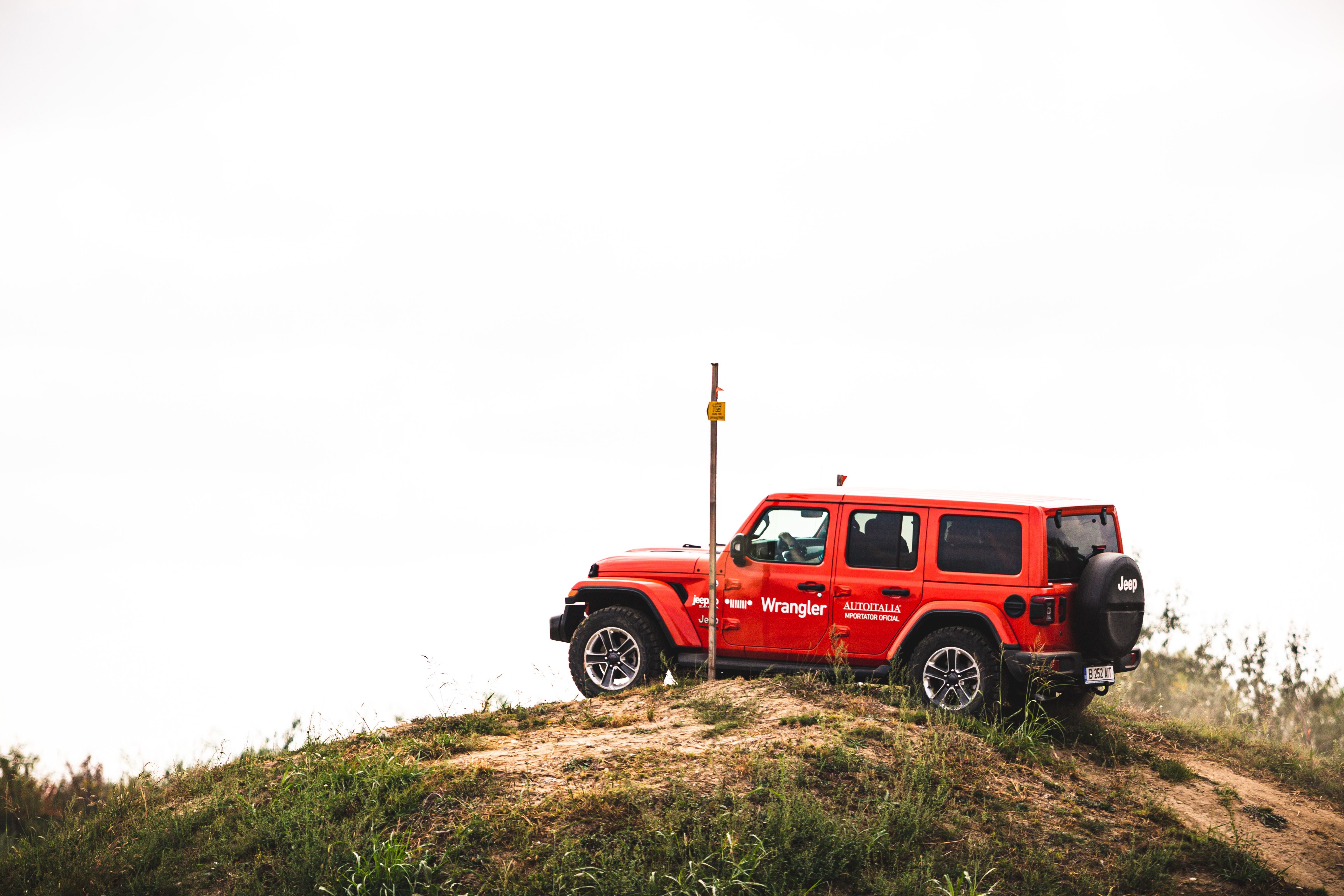The new Jeep Wrangler JL has been around for some time but we had the chance to put it to (hard) work where it belongs the most: that is, way off the beaten path. So we were handed a couple of Wrangler JL Saharas and encouraged to roam freely on an obstacle course that made sure neither we or the cars had it easy. Here’s what we can report in the wake of this off-roading experience.
The Cars
During the event, we got to drive the new EU-spec 2018 Jeep Wrangler JL in its two cabin configurations: with two or four doors.
The two-door Wrangler JL packed the new 2-liter turbocharged inline-four gasoline unit pumping 272 horsepower at 5,250 rpm and 400 Newton-meters (295 pound-feet) of torque at 3,300 rpm. It also gets the new eight-speed automatic gearbox and just as its four-door brother, was configured with the Sahara trim.
The Off-Road Course
Located near a stone quarry, the course stretches over 1,2 kilometers (0.74 miles) and features 20 ramps, out of which nine have a diagonal incline. There’s even one made of steps built out of truck tires, but that’s for extremely modded off-roaders so it wasn’t included in our program, since the Jeeps we were handed were nothing but bone-stock press cars.
The ramp inclines vary between 15 and 40 degrees, and there’s even a water fording section that’s 12 meters (39 feet) long and 50 centimeters deep. To our delight, this was part of the course Jeep had prepared for us. It’s also worth nothing that we completed the course both behind the wheel and as passengers on the rear seat (the front passenger seat was occupied by one instructor/supervisor in each car) so at this point, it’s worth mentioning that the two experiences are completely different. But we’ll get to that in a minute.
The Action
I never had the chance to drive the new Jeep Wrangler JL up until now. I’ve been inside one, but didn’t actually drive it. So I’m sitting behind the wheel, adjusting my seat, my seatbelt, turning on the engine, and sliding the 4x4 setup’s lever into 4L (four-wheel drive low gear). ESP/traction control is also off and I’m now heading for the first round of mini-hills the off-road course is so eager to throw at me.
The first thing that hits you once you’re on the move in the Wrangler JL, be it on a less than friendly off-road course, is just how easy it is to steer it through any obstacles might come your way. The hood bulge acts like your crosshairs and you can effortlessly position the Wrangler on narrow paths with a level of accuracy that’s worth of praise.
As we mentioned earlier, our car was a Wrangler JL in Sahara trim, which meant we got to play with Jeep’s Command-Trac four-wheel drive setup. Jeep also offers the Rock-Trac four-wheel drive setup, but for that you’ll have to climb up a Wrangler Rubicon. We only got to drive Saharas, but the Wrangler’s impeccable behaviour left us asking how much of an improvement can Rock-Trac actually bring to the Command-Trac four-wheel drive. That’s another story for another time, though.
In fact, the Wrangler is so good at communicating what’s happening with different parts of the car that you’ll feel the wheels battle for every inch of terrain as they dig into the ground, excavating dirt and rocks as you begin to go up until the only thing that’s visible through the square windshield is the cloud-painted sky above.
This goes for the two-door Wrangler JL Sahara as well. In fact, it’s only when you reach the top of the ramp that you’ll have to start worrying about not getting the car on its belly, with the wheels hanging mid-air. It actually happened a couple of times to those driving the four-door model, something that was unheard of to those trying out the two-door, hence shorter variant.
The explanation lies, once again, in the numbers: the 2.2 CRD four-door Wrangler JL has a breakover angle of 20 degrees in Sahara trim, while the two-door JL fitted with the new 2-liter turbo gasoline mill outranks that by coming it at 26.2 degrees in Sahara trim. Trust us when we say that might not look like much, but it makes all the difference out there. The shorter wheelbase also helps: regardless of what engine you pick, the two-door Jeep Wrangler JL’s wheelbase stretches to 2,459 millimeters, while the four-door’s is considerably longer, at 3,008 millimeters. Sure, you can take your four-door Wrangler and slap it with a suspension lift kit and larger wheels, but keep in mind that our testers were stock Wrangler JLs - basically what you’d drive off the dealer’s lot.
You also need to keep an eye on your rear end when off-roading the four-door Wrangler, especially if you’ve fitted it with a tow hook.
Now, as we were descending every slope the course threw at us, our instructor came up with a neat trick. It’s sometimes better to put the eight-speed gearbox in manual when descending hills, for example, as you’ll get the advantage of engine braking. This way, you’ll go softer on the brake and it’ll be way easier to control the car downwards. That’s not an absolute must, though: the Wrangler can still do the job if you decide to keep the transmission in drive, but you’ll have to apply more pressure on the brake pedal as the car’s tendency is to accelerate slightly.
Regardless of what body size you pick for the new Wrangler, it can cross a water ford that’s up to 760 mm (76 centimeters) deep at a speed of eight kilometers per hour (that’s five miles per hour). The water fording section we had to cross was only 500 mm deep (50 centimeters), so it didn’t exactly challenge the cars in any way.
What’s it like for the rear passengers, then?
Right. Yeah. That would be scary. Especially if it’s your first time on the back seat of an off-roader while it does its job. Mind you, the obstacle course we got to play in was of a hard difficulty. The team of pro instructors made that clear from the beginning, otherwise they wouldn’t have been there in the first place.
Sit behind the wheel, though, and you’ll get all the confidence in the world. The steering is submissive, it’s easy to point the car towards or through obstacles, you get loads of reassuring levels of grip, and there’s just this feeling that nothing’s too big or too steep in your way. It’s as if the whole car works for you and never against you.
Further Reading
Read our full review on the 2018 Jeep Wrangler.
Driving the 2018 Jeep Wrangler JL

